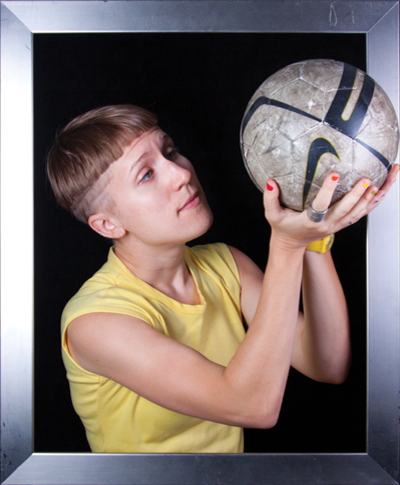 Can you explain a little bit about the type of work you do here at Cooper-Hewitt?
Can you explain a little bit about the type of work you do here at Cooper-Hewitt?
When I started here two years ago I was in the Education Department but now I'm part of the Digital & Emerging Media team. We connect the public with the Museum through digital means. We want to amplify the ideas and stories that spring out from the Museum collection and from the history of design. My role on the team is to create graphics and video.
Some highlights: a mini-mini-documentary on the National Design Awards, a cover design system for our new e-book series, a custom iPad kit for NYC arts teachers, and also wireframes/mockups/visual design for web. And the staff portraits in picture frames you see in the "Meet the Staff" interviews.
I'm learning about the tools and techniques of information architecture and user interface design and applying that to what I do. My goal for 2013 is to learn front-end dev skills, so I can code up the graphics I design.
What is the most challenging part of your job?
Trying to stay zen amidst fluctuating tides.
We’re deeply rethinking the Museum by asking difficult questions about audience, mission and relevance. There are a lot of challenges and opportunities that spring from the renovation process. Bill Moggridge left us with a new sense of open-ended possibility, a feeling we all want to keep alive.
What do you enjoy most about your work?
Making things! Inspiring conversations with my co-workers!! The exclamation marks are real. I mean them.
I am especially digging Cooper-Hewitt Labs—which refers to us technology nerds on Seb's team. The idea is to have an in-house media/tech incubator to quickly prototype and test products for the Museum. Similar to NYPL Labs or the New York Times Labs.
How would you describe design? What is good design? Bad design?
Design is the mindful, deliberate & holistic process of producing something to serve a purpose. You can tell good design because you wouldn't change a thing about it–nothing more, nothing less. Bad design makes you do the mental list of stuff you'd like to change about the can opener, the couch, the bank website, the office workflow, the apartment, the transportation system. It needs more, it needs less. It needs design.
How has the renovation either opened new doors or posed new challenges for you?
The renovation means I'm working in a "what if" mindset as opposed to a "everything's decided, let's crank it out" mindset. This is a door and a challenge combined.
Micah Walter & I led a workshop with a cross-section of Museum staff (educators, grant-writers, librarians, curators) to create quasi-fictional personas for museum-goers, along with journey maps of those patrons' interactions with Cooper-Hewitt. That's the sort of work we're doing around the renovation–thinking a lot about audience.
Looking forward, what are you most excited about once the museum reopens?
Maybe the Museum could inspire young, creative people to pursue a career in design. I think that's exciting. I think that's good for society! When I started working here two years ago, I didn't understand design. I wasn't educated about its history and meaning. I actually thought I wanted to be a fine artist and was gearing up to apply to grad school. Now that I've learned more about design, I changed my mind and want to be a designer. Or rather, I didn't change my mind, I just got exposed to an adjacent field that suits me better. I hope that others like me can be steered in the direction that's right for them. Maybe they'd be swayed after a compelling experience at our Museum.
What is your favorite Cooper-Hewitt exhibition to date? Why?
I liked the Ted Muehling Selects exhibition because it showed the process behind very fine glassware. I like seeing rarefied, intense craftsmanship like that. You can tell that the people who make that glass are utterly devoted–almost spiritually–to their craft. You can sense that just by looking at the glass.
What was the most memorable moment for you at Cooper-Hewitt?
I really liked working with Bill. He inspired me.
What is the future of design?
I think the future of design is that a wider audience of people will understand what it is (hint: it's not synonymous with "fashion") and what it can do (a lot). The next evolution after that will be understanding what design can't do.
Finally, if you could redesign anything, what would it be?
I would re-design the software and hardware experience of making digital video and graphics. I get really engrossed at work and I don't want to get up. I get glued to my spot. I'm always stretching and I try new sorts of ergonomic products. The body is designed to move, walk, bend, climb. I would like to stand sometimes, use the whole arm instead of just the hand, maybe legs, maybe walk around the office as a way to drag and drop digital files. When the body gets drowsy, the mind gets drowsy!
Working on the computer could be more like painting on an easel, or cooking, or building a big piece of furniture. Precision need not require squinting and hunching. The whole body serves the work. And you wouldn't leave the office with your spine in a knot.